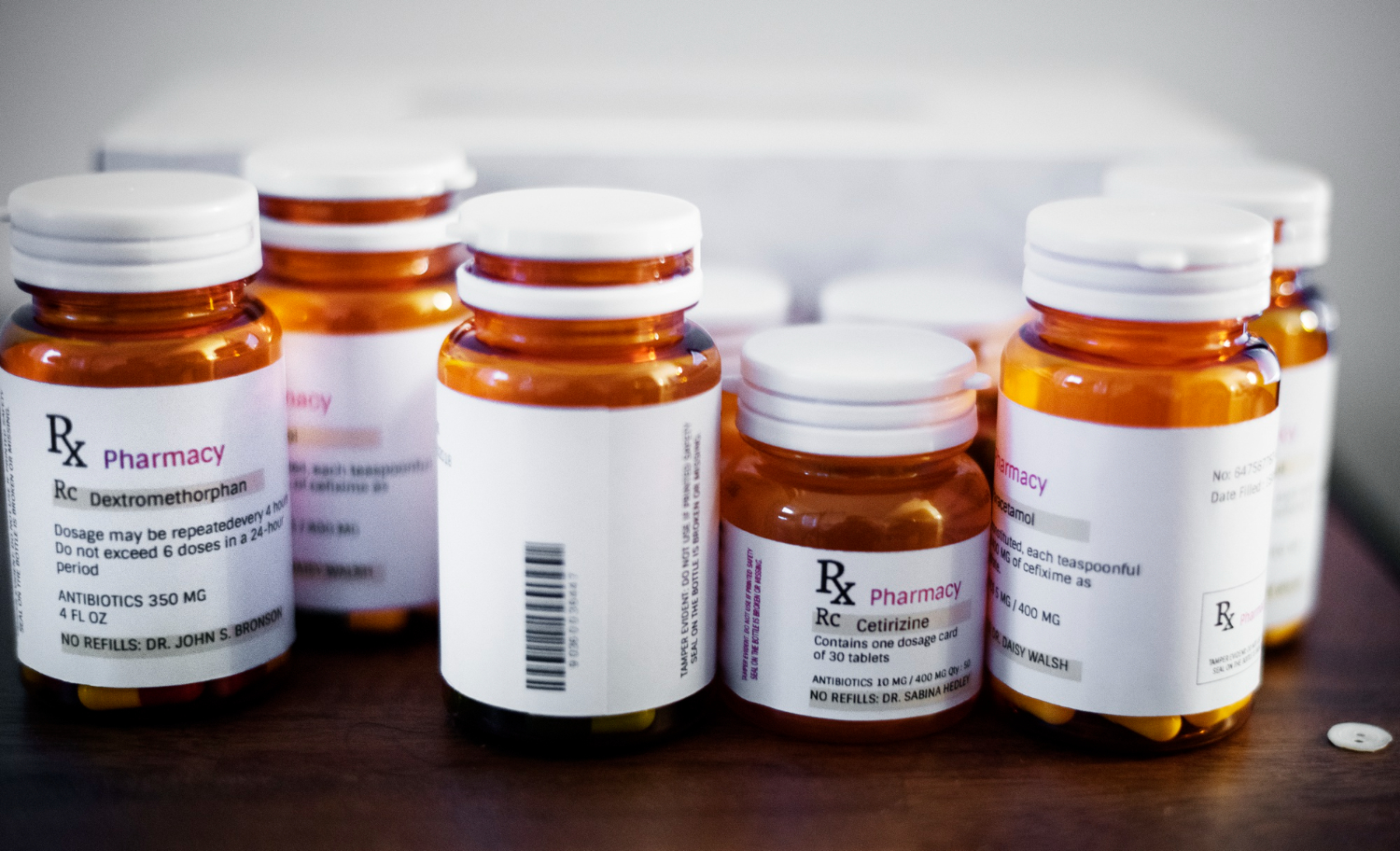For those of us who work in industries where we handle pharmaceuticals, we hear the term “scheduled” a lot. Most of us are familiar with what it means when a drug is scheduled or part of the DEA’s drug scheduling system. It means it’s a controlled substance, subject to reporting and regulation.
But diving in a bit deeper, the details behind DEA’s drug scheduling system can be a bit nebulous and hard to understand, even for those within the industry. Here’s what it means when a drug is scheduled and what the various DEA drug scheduling levels and requirements mean for EMTs, veterinarians, pharmacists, and others who handle them on a regular basis.
Understanding the DEA’s Drug Schedule
In 1971, The Federal Comprehensive Drug Abuse Prevention and Control Act of 1970 (or Controlled Substances Act, as it’s more commonly known) became effective. The federal law was established to give pharmacists and medical personnel guidelines and to regulate the trafficking and distribution of controlled substances. The federal law has since been amended many times to adjust as new substances and applications are discovered.
The Controlled Substances Act contains two components or “subchapters.” The first, Subchapter I, concerns controlled substances, their chemical makeup, manufacturing, distribution, and regulation. Subchapter II covers the importation and exportation of drugs, chemicals, and controlled substances.
Within subchapter I, controlled substances are defined and divided into five categories or “schedules.” Schedules are determined by the abuse potential of each substance and other factors. The DEA has determined that schedule I drugs have the highest potential for abuse and schedule V drugs have the lowest potential for abuse. The Act also outlines chemical products such as ephedrine, phenylpropanolamine, and pseudoephedrine that have the potential for abuse.
It’s important to note that because a drug has a higher schedule, it doesn’t necessarily mean it is legal or illegal. For example, marijuana and heroin are both schedule I drugs due to their likelihood of potential abuse, while cocaine and methamphetamines are schedule II. Opioid painkillers are also schedule II. A substance’s medical value is also considered in the scheduling, along with other factors, so it’s a complex system.
The DEA drug schedule allows them to control drug access and supply. Some medical advocate groups argue that this limitation prohibits the study of certain drugs’ potential for medical use. But the law has changed several times to evolve with new medical discoveries. As a result, some drugs have been added, and others rescheduled throughout the past few decades.
Factors of Drug Scheduling in the Controlled Substance Act
The Food and Drug Administration first regulated drugs and medicine in the early 1900s. In fact, the agency was created in response to concerns about mislabeled foods and medicines and their distribution to consumers. Some producers added ingredients like formaldehyde and opium to medications—even those used for children.
As the need for regulations and protections grew, the FDA began to explore the need for a separate drug enforcement agency. In the early 1970s, the DEA was formed as a faction of the Department of Justice in conjunction with the Controlled Substances Act.
To determine a drug’s schedule, the DEA examines the potential for abuse as well as the medical value of the drug. It’s important to realize that not all prescription drugs are considered “controlled substances,” and thus, not all prescription drugs are scheduled.
Some examples of non-controlled prescription drugs include:
- Antibiotics
- Inhalers for asthma
- Diabetes medications, including insulin
- Cholesterol medicine
- Some blood pressure medicines
- NSAIDs (non-steroidal anti-inflammatory drugs)
- SSRIs (selective serotonin reuptake inhibitors) for anxiety and depression
While a medical professional may prescribe and oversee the use of certain non-controlled medications, these drugs aren’t subject to the DEA reporting requirements of controlled substances.
When a drug is controlled, the DEA has determined that it has the potential for mental or physical dependence. To prevent potential abuse, prescribers must document how the medications are distributed and to whom. The documentation is meant to deter abuse and diversion (drugs that are “diverted” from their intended purpose and instead redirected for distribution and abuse).
So how are these drugs classified? How do you know what schedule a drug falls into?
Controlled substances include many medications and substances, including mental health medications like lisdexamfetamine, alprazolam, and clonazepam. In addition, some pain medications like tramadol and pregabalin are controlled, as are sleep medications like zolpidem.
The DEA determines the drug schedules. Some examples of drug scheduling are as follows:
- Schedule I: Controlled substances with a high potential for abuse that are not available by prescription. These are not deemed to have any medical use. Examples include heroin, ecstasy, LSD, and marijuana.
- Schedule II: Controlled substances with medical value but a high potential for abuse. Some of these drugs are available by regulated prescription. These include oxycodone, fentanyl, methamphetamines, cocaine, and Vicodin.
- Schedule III: Controlled substances with medical value but still a high potential for abuse. These drugs are available by prescription. Schedule III drugs include ketamine, testosterone, and anabolic steroids.
- Schedule IV: These drugs also have medical value and a high potential for abuse and are available by prescription. They include benzodiazepines and zolpidem.
- Schedule V: These drugs have the least potential for abuse and have medical value. They are also available by prescription only. Schedule V drugs include cough medications with low amounts of codeine, such as Robitussin AC, the seizure medicine ezogabine, and the nerve pain medication Lyrica.
In emergency medicine (and all administration and use of controlled substances in schedules II, III, IV, or V), practitioners must track, carefully store, and report controlled substances. According to the PPAEMA (the Protecting Patient Access to Emergency Medications Act of 2017, an amendment to the Controlled Substances Act), agencies must store drugs in a location that is registered with the DEA.
EMTs and other professionals who handle controlled substances must maintain controlled substance records, outlining the inventory, storage, administration, and discarding of drugs.
Tracking Controlled Substances for Patient Safety (and Your Own)
While the system can be a lot to understand and wrap one’s head around, it’s essential to recognize that anyone who handles controlled substances is subject to the legalities surrounding those drugs. Proper inventory, tracking, and reporting on the use of these drugs protect practitioners and patients.
Failure to properly track or report the use of controlled substances in a medical, dental, or veterinary practice or in an emergency response unit can lead to the loss of licensure—and the forfeiture of access to controlled substances. In other words, if you lose track of the controlled substances used within your unit, you could experience at the very least, a paperwork headache, but you could also face legal ramifications and significant fines.
How significant can the fines be for misreporting? Per the DEA, “Violations of the recordkeeping requirements subject DEA registrants to civil monetary penalties of up to $14,502 for each violation.” In some cases, with several violations, you could be looking at tens or even hundreds of thousands of dollars. Even avoidance of one violation easily makes a tracking system a worthwhile investment.
More importantly, controlled substance tracking and reporting help protect your patients. There are no worries about expiration dates, empty drug kits, or misplaced vials. You’ll know what you have on hand whenever you respond to a call or meet with a patient.
Fortunately, LogRx was developed by a team of EMS and medical professionals to take the stress and hassle out of controlled substance tracking. When you have a busy unit with many responders, patients, and emergencies, it’s easy to put off tracking. Paper logs can be lost, damaged, or hard to decipher.
LogRx puts all you need to track controlled substances at your fingertips. This software turns your handheld device—phone or tablet—into a reader. Scan the code on any vial or bottle and track it in seconds.
Supervisors can easily monitor inventory and dispensing from the dashboard with real-time updates. LogRx gives a complete overview of what’s on hand, what’s running low, and all the moving pieces you need to know to track and report controlled substances for DEA compliance.
LogRx isn’t only for EMS. After working with several veterinary and wildlife experts, the app has evolved to make it ideal for people working with animals and handling controlled substances, even in the field. LogRx works offline, allowing professionals to track controlled substance use and upload the data when they’re back in range.
LogRx makes tracking any drugs—controlled substances or otherwise—simple and efficient. We understand that in medicine, accuracy and access are critical. LogRx ensures you and your patients have what you need when you need it. It helps you remain DEA-compliant and protects your time, money, staff, and practice. Reach out today to learn how LogRx can work for you!






